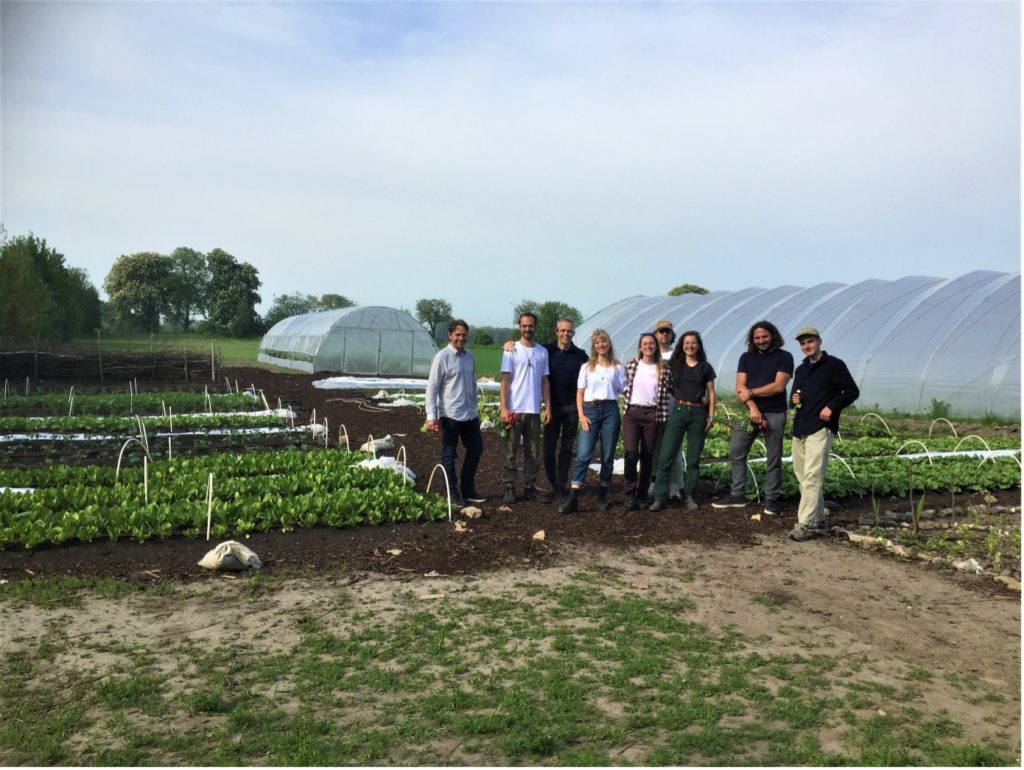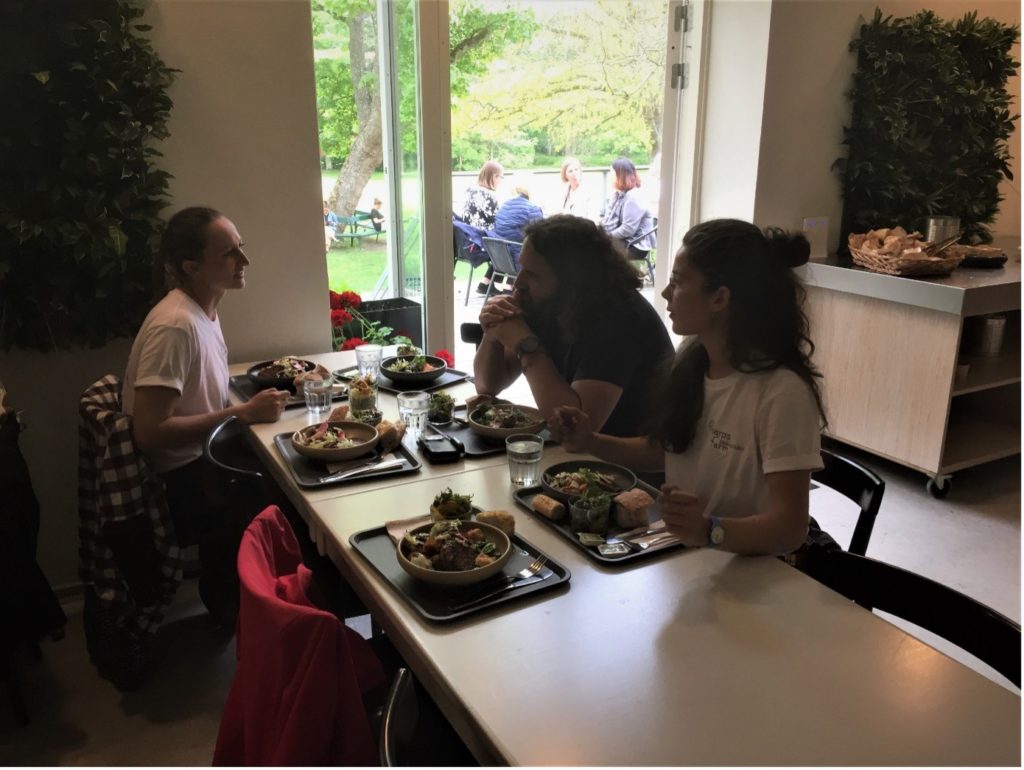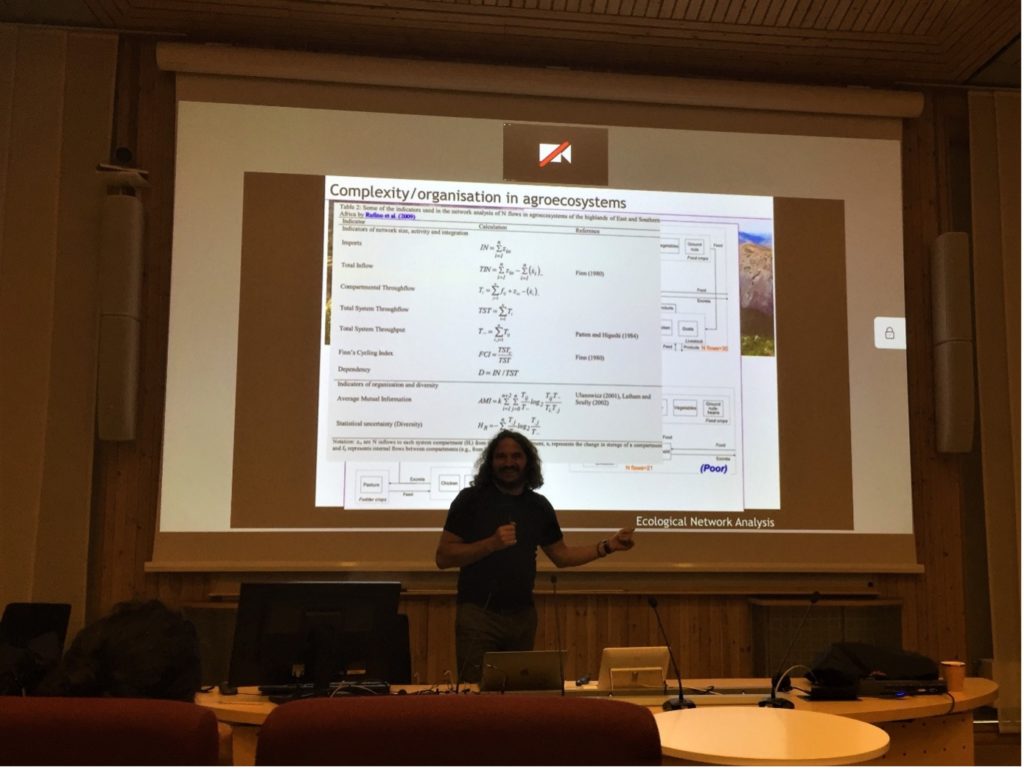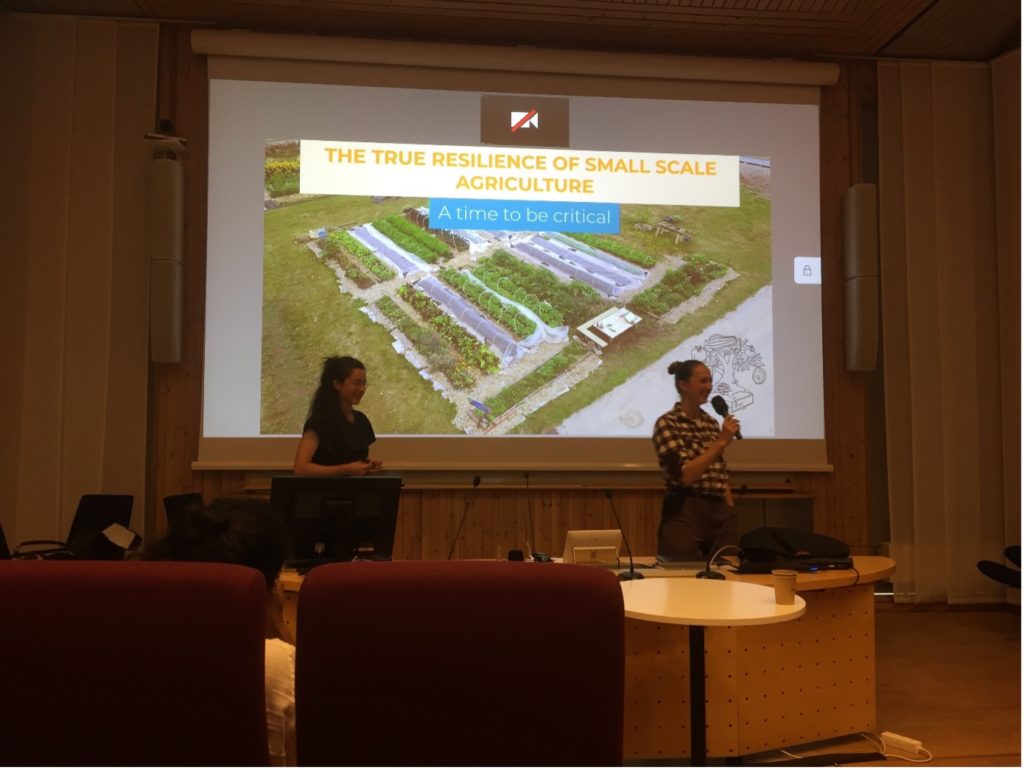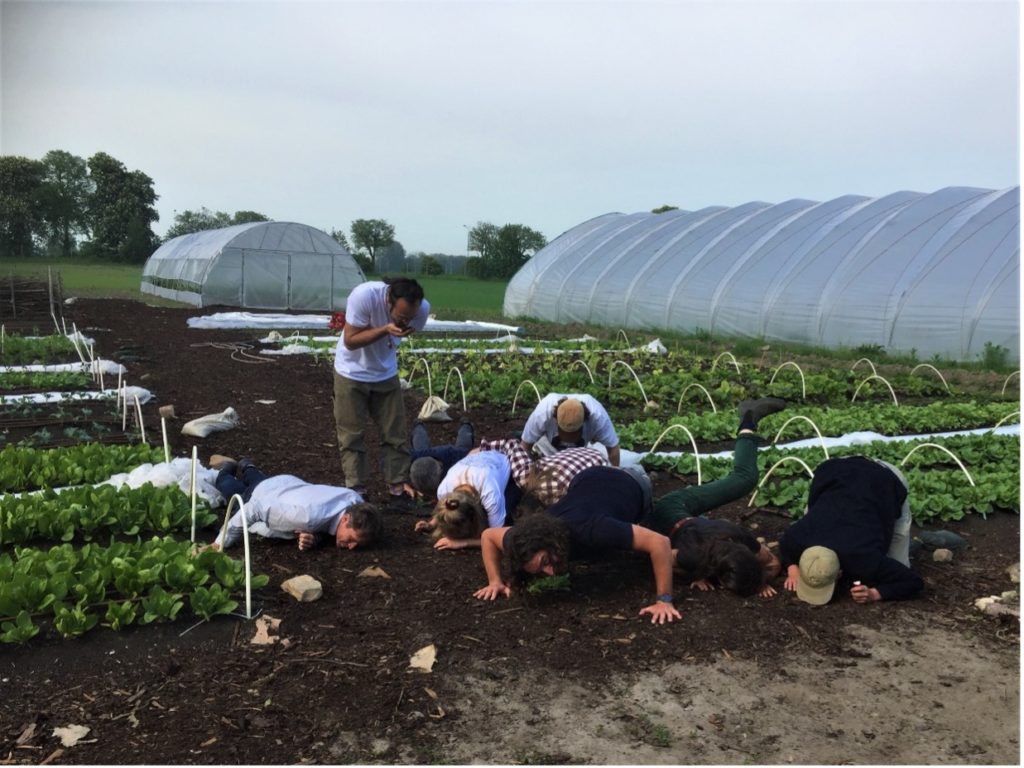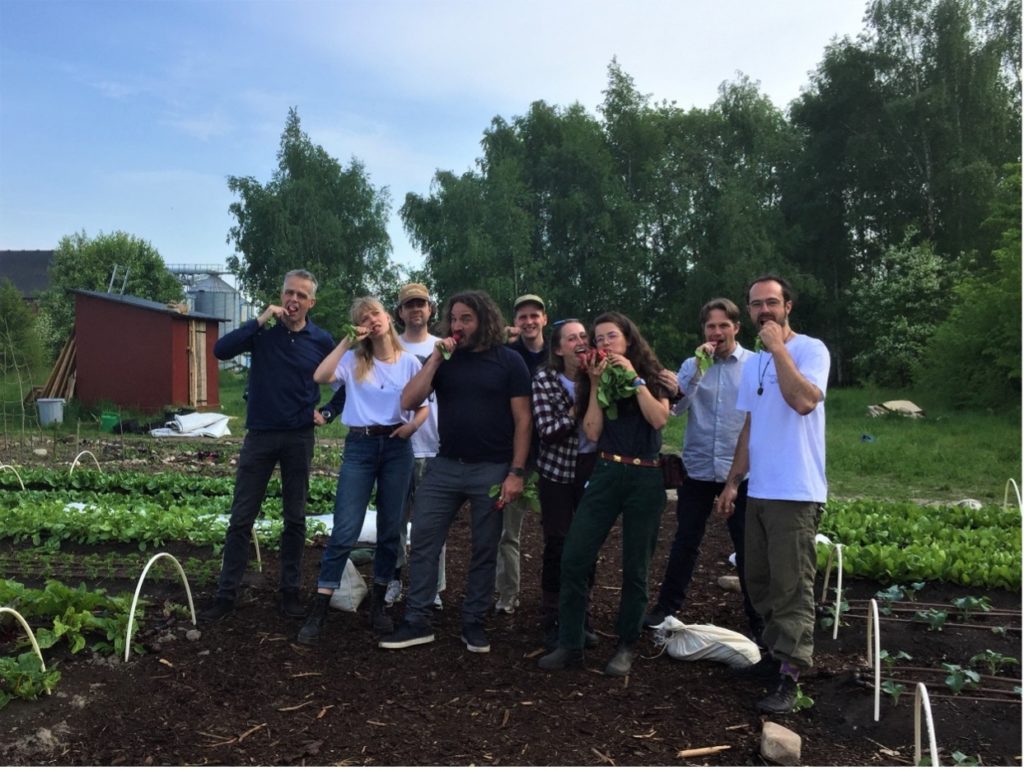On 19 May, on a hot and humid afternoon (by Swedish standards), it was time for the annual Agroecology Day to take place at the Alnarp campus of the Swedish University of Agricultural Sciences, SLU. After two years of digital adaptations to the pandemic, agroecology enthusiasts once again had the chance to meet physically to discuss important issues. This year, the event was co-organised by SLU staff, headed by prof. Teun Dekker at the Department of Plant Protection Biology and a group of master’s students in agroecology who are also running Alnarp’s Agroecology Farm. The symposium’s theme was Ecosystem resilience for farm resilience, and to everyone’s delight, the renowned Argentinian researcher Pablo Tittonell was the guest speaker.
A holistic view on the agricultural system
At noon, just as the students returned from having given Tittonell a tour of their agroecology farm, SIANI’s intern arrived in Alnarp. The rapeseed fields surrounding the campus were bright yellow and the air carried a scent of lilac. A handkerchief tree was in full bloom right outside the campus restaurant, where the students invited Tittonell for lunch. This was a great opportunity to get to know each other better and discuss everyone’s favourite topic – agroecology. According to the policy brief Becoming an agroecologist, agroecology is about designing locally adapted and controlled farming systems that build on the functions of natural ecosystems, including agrobiodiversity, natural pest control and local nutrient cycling. As a holistic study of the agricultural system, agroecology deals with the effects of growing food from environmental, economic, and social standpoints.
Exchanging ideas from different perspectives
During the lunch discussion, the students expressed frustration over the fact that many people have difficulties grasping the concept. “Could agroecology be seen as a lens?” Tittonell considerately interposed with his views on the questions discussed. The group agreed on the benefit of having prior knowledge of agronomy or another academic discipline before going into agroecology. Or, as Tittonell put it: “You need to understand the system to be able to criticise it.” Co-creation of knowledge, both scientific and experiential, is important in agroecology. As an illustration of the multidisciplinary nature of agroecology, the students around the table had previously studied arts, economics, ethnology, and biology, respectively. In addition, the programme has a strong international focus, and the nationalities represented among the students were Switzerland, the UK, Germany, and Sweden.
